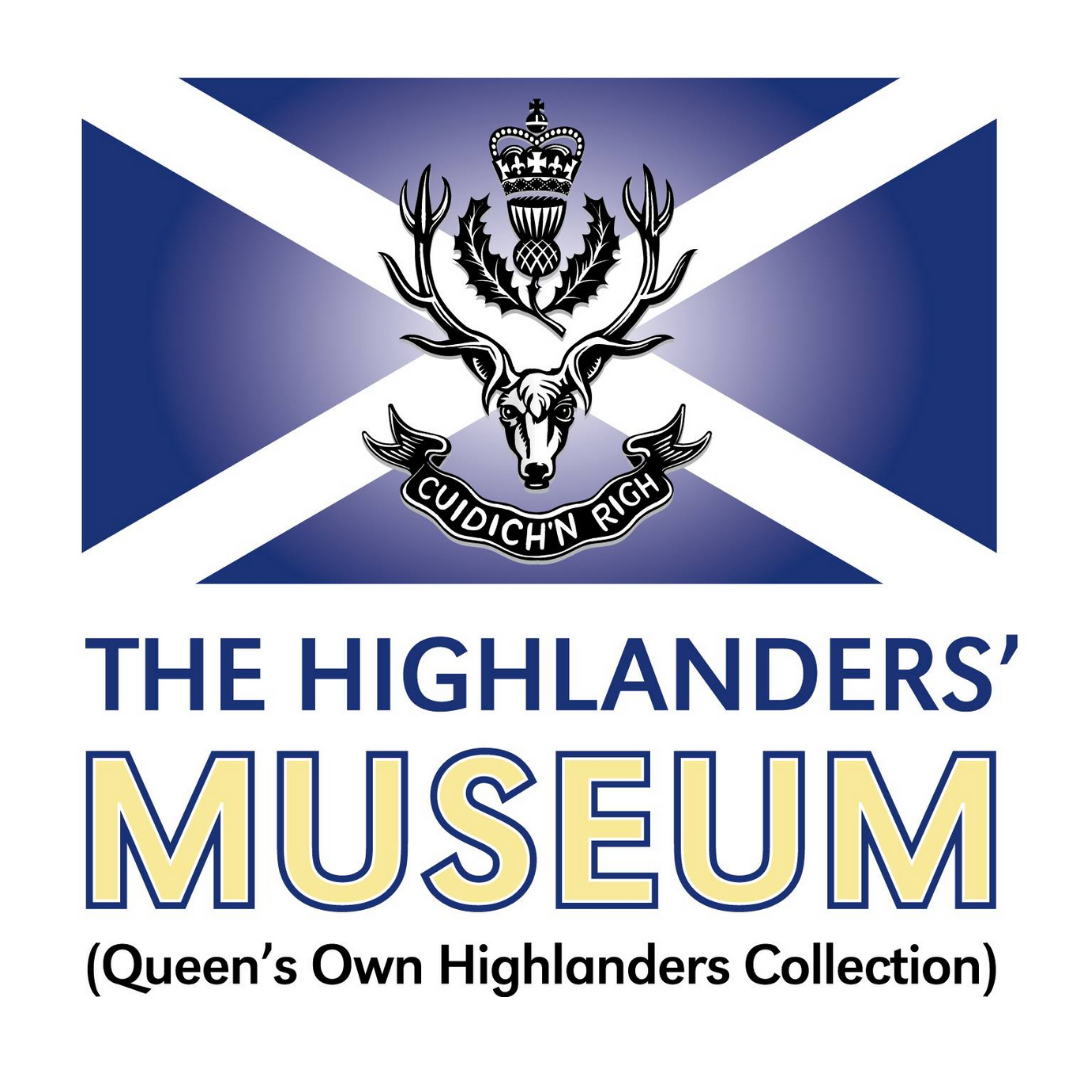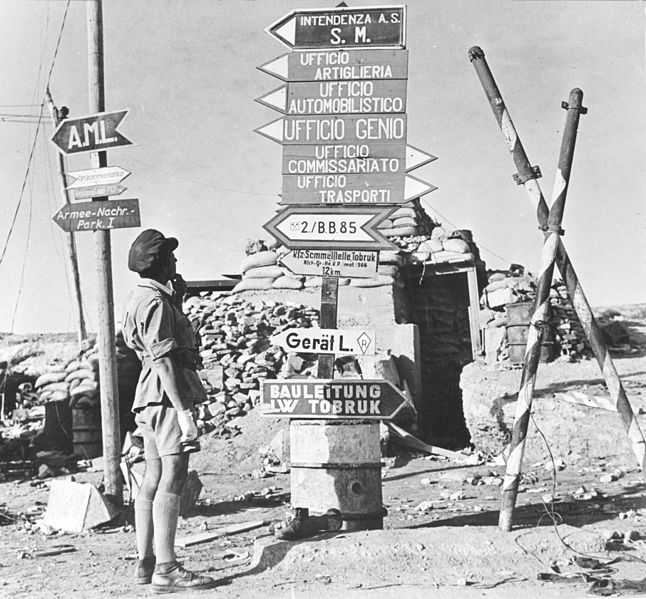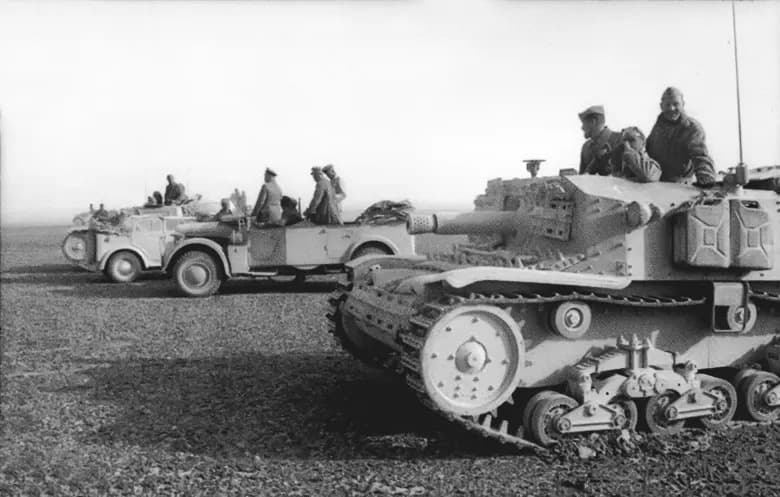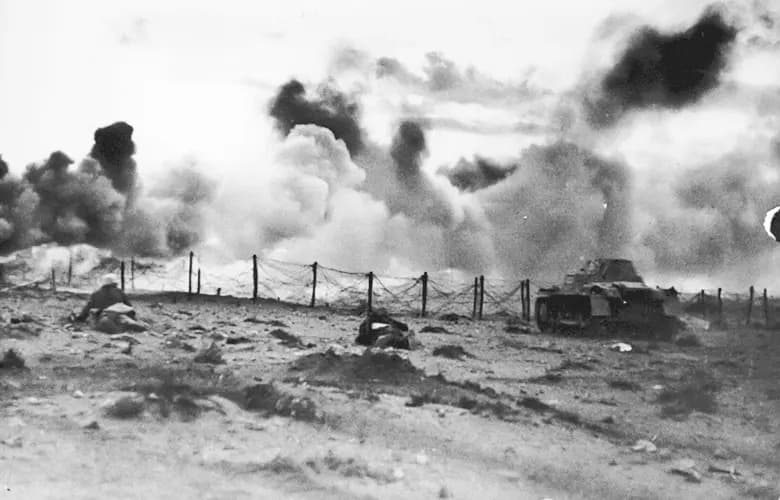Escape from Tobruk
An officer’s tale
The following is the account written by Major – then Lieutenant – A. B. Mitchell of his escape from Tobruk. It is published in the Records of the Cameron Highlanders, Volume V, page 403, held in the Highlanders Museum (Queen’s Own Highlanders) archives.
22nd June 1942
At 1.20 AM I found myself at company HQ with Major James Marshall, the O.C., and Captain Donald MacKenzie.
We decided to make a break through the El Adem gap to the south, over the escarpment, and then due east. We hoped that, if all went well, we should join with our own troops on the Libyan border, where we hoped a stand would be made. The distance was some 120 miles, about six days marching. We set off at 2.30 AM. Our rations consisted of the following items:
1 1lb tins tomatoes 1 2-gallon tin Water (carried in a pack)
6 tins “Bully” 6 water bottles filled
1 dozen packets of biscuits
We were each armed with a .38 pistol and had maps, compasses and binoculars.
We reached the gap without incident, and after warily negotiating the mines on the road, found ourselves outside the Tobruk perimeter. In the darkness four others had joined us – Sergeant Fisher, Sergeant Wood, Private Nicol and one other private whose name I cannot recall. As they had no maps or compass, we let them come along with us.
The first few miles we traversed slowly, as we could hear voices all around us.
Daybreak found us still below the escarpment on the west of the Axis road and only about 100 yards from it. We made for a derelict 3-tonner, complete with cover, and decided to lie-up there for the day. It was soon evident that we were in the centre of a hive of activity. Tanks and lorries rolled down the road towards Tobruk, and more could be seen all along the escarpment, while JU-52s poured in with German troops.
Pooling our resources, our daily ration for the next six days consisted of ½ pint of water, 1/7 tin of bully and some biscuits. It was decided to make two meals of this. One before we started each night, and the other when we stopped to lie-up in the morning. We could well imagine, from the first day of intense heat, that the water situation was going to be a serious problem.
At 9 PM it was dark enough to move, and anything that could rattle was muffled. We reached the top of the escarpment by 11 PM, where we had to pick our way through enemy tanks and lorries. We must have been seen, as one of the tanks put on its lights and started moving towards us. Fortunately, we were not in the beam, and we scuttled for a slit-trench close by. All seven of us squeezed in, and the tank came on to within 25 yards of us and turned away. We breathed again; we were safe; but made sure by breaking into a run until we had put about a mile between those tanks and ourselves. After a steady march at three miles an hour, stopping for ten minutes every two hours, we found ourselves about fifteen miles south and a little east of Tobruk.
23rd June 1942
We were not so fortunate this morning, as we found no shelter from the sun, save a few gorse bushes. With an old ground sheet, we rigged up a crude shelter. Although tired, we could only sleep for a few hours in the heat of the day, and by midday everyone was awake. We thought it safe enough to make a short recce in all directions to try to improve our position and, if possible, find some water.
To our surprise we found a large German “Leaguer” only a mile away in a wadi and in our line of march. Further movement was out of the question. As we could see no end to this group to the south, we decided that night to skirt it to the north, which we did without incident.
24th June 1942
We stopped beside some abandoned Italian vehicles from the 1940 push. They provided good shelter, but it was still frightfully hot, and thirst more than hunger was having its effect. Examination of the vehicles found traces of water in one of the radiators. About three pints of very filthy water was drained from it. It tasted awful, but we drank it nevertheless. James Marshall and one of the privates had blistered feet and some clean water had to be spared to clean the burst blisters. We started this evening at 8 PM and plodded on, adding an extra hour in the morning after daybreak in order to reach the shelter of a crashed CR-42 (Ed: An Italian single seat biplane fighter aircraft). We lay up as before.
25th June 1942
June: We were now on familiar territory. Our desert barrel-routes and the broad vehicle track – the Trig-el-Abd. We hoped to make the “wire” on our next bound, but were not very hopeful of meeting our own troops there, as we had seen no sign of action for two days and we were travelling only about five miles from the coast. The water ration was getting smaller, and if we did not reach our troops in a couple of days, the position would become desperate. Our party were beginning to string out. Sergeant Wood and the private with sore feet were lagging, and the pace had to be slowed.
26th June 1942
Morning found us on a clearly defined track about ten miles from the wire, and again we found shelter by an abandoned Italian Breda vehicle full of 60-pounder shells. This vehicle appeared to be only recently abandoned, but hope of making the thing go were soon shattered on examination. We did find water, however. We drained about six pints from the radiator. We could hardly believe our good fortune, and someone produced a little tea and sugar, we had a fire going in no time.
It was my turn to look-out, and I scanned the desert while we waited for tea. There, to the north, about two miles away on the horizon, appeared a moving vehicle. I warned everyone, and the fire was put out. For hours we watched this vehicle move around us in a half-circle, always keeping just too far away to identify the two figures moving in the back. We did notice that it stopped each time it reached the barrels on the tracks, and deduced that it would eventually come along our track, as there were a couple of barrels only 100-yards ahead of us. We had not long to wait, and we made our plans, having distinguished the Afrika Corps hats of the two Germans in the back.
The two privates were to act as decoys, and lie under our vehicle with their boots off, and to make movements to attract attention should they come past. We placed the two sergeants in the front, and James, Donald and I, who were armed, hid in the back. Everything went according to plan. The German vehicle, an open 30-cwt, approached from the rear; the two Germans in the back spotted the two men underneath and hammered on the canopy for their driver to stop. This was our cue. I jumped out and went for the driver, Donald covered his mate and James, with the two sergeants, covered the two Germans in the back. We must have looked pretty desperate, not having washed or shaved for more than a week. Those Germans were certainly scared. Donald and I disarmed them and kept them covered; Sergeant Fisher attended to the vehicle, and James organised the loading of our bits and pieces.
The Germans were sappers and were plotting our barrel-routes on to their maps. We destroyed their maps and left them sitting in the desert with the sordid remains of our water and rations. We
had found that their vehicle had ample supplies of both. All this had taken only about five minutes, and we were soon heading due south after an adventure only to be imagined in a Wild West film.
We had spotted another vehicle at the same spot as the first, and had therefore no time to waste. We had relieved the two Germans of their hats, which fitted Donald and I, and we took our positions in the back of the vehicle as the Germans had, keeping the others down low, while James went in the front with Fisher.
A rocky surface kept us down to a steady 25 mph, and after 20 miles we took stock. We found food and water plentiful, most of it having been looted from the Tobruk NAAFI. Tins of stew, potatoes, fruit, milk etc. The petrol situation, however, was not so good; there was only sufficient in the tank to take us about ten miles more. We turned again due east and luck was with us. Having gone only about five miles we found an abandoned German armoured car with a tank containing about 27 gallons, and ten miles further on we hit a British dump of petrol, and loaded as much as we could carry with safety. We knew then that we could not be far from the border, and when we found a dump of water, we decided to call it a day. That night we ate and drank until we felt ill, and having posted our look-out, settled down to a well-earned sleep.
27th June 1942
We now decided to move by day, keeping well away from the coast. We hit the wire soon after we started at 7 AM, and found a gap about five miles south of Fort Madelina. We suspected mines, but kept our fingers crossed and tore through. Night found us on the Mersa Matruh-Siwa track. We were then midway between those two places.
28th June 1942
A decision had to be made here. Whether to make for Siwa oasis, where we were sure that one of our fighter squadrons was still operating, or continue due east and make straight for Alexandria. We decided on the latter. Full of food and high spirits, we set off, and stopped again almost immediately. Donald had sighted a speck on the track moving south towards us. It proved to be two Italians on a motorbike. Donald and I took up our positions wearing German hats, and we moved on slowly towards them. They approached unsuspecting and stopped alongside. They were petrified when I dug a Luger pistol into the stomach of the driver. We questioned them in very poor Italian, and as far as we could make out, our troops were making a stand in Matruh. They could tell us nothing of Rommel’s panzers, whom they had not seen. They belonged to the Bersaglieri Regiment and were deserting. We took them with us after destroying the bike.
We had only been going for a few hours, and making good progress over a hard rocky surface, when suddenly, out of a wadi only half a mile ahead, came a German jeep driven by a German officer, to be followed about an equal distance in the rear and about 400 yards to our right, by a British pick-up driven by a German soldier. We had no time to formulate a plan of action, and this is what happened. We approached the officer slowly (Donald and I were still wearing our Afrika Corps hats), and drove between the two vehicles, keeping the jeep on our left. I shall never forget the look of amazement on the face of that German officer as we pulled him out of his seat and threatened him the consequences of uttering a syllable. His capture on the blind side of the other vehicle took only a matter of seconds, and when the pick-up closed in to investigate, its driver too was soon made our prisoner. The German officer, who spoke fairly good English, told us that we were wasting our time, because Rommel would be in Alexandria and Cairo in a few days. He was dumb to our questioning, but he was obviously a recce officer and his own troops could not be many miles away. Speed was therefore essential.
We had now four prisoners and had to organise our loads. James and I in the front of the pick-up and two Italians, with one private to look after them, in the back. Sergeant Fisher and Donald in the front of the 30-cwt, with Sergeant Wood and Private Nicol looking after the two Germans in the back.
All set for Alexandria, and approaching the area south of Garawla wadi, but still on the escarpment. A shot rang out, and we stopped the pick-up, which was ahead. Shouting from the other vehicle made us go back to investigate. We found that Sergeant Wood and Nicol had been struggling for possession of a Luger pistol, when it accidentally went off, severely wounding Nicol in the thigh, breaking his leg near the hip. Everybody, including the Germans, lent a hand in making a crude splint, and making Nicol as comfortable as possible. Four shell dressings came in useful, but Nicol was in bad shape. Our plans to keep away from the coast had to be dispensed with, as it was vital to get Nicol to a hospital without delay. We knew the country well, and made for Garawla wadi to get off the escarpment and reach the coast road. We had lost two valuable hours attending to Nicol. I mention this because, as it happened, these were to prove vital to our future.
After going about an hour, north and slightly east, we sighted a great column of yellow dust to the north and west about four miles away. Panzers without a doubt. We went all out for the wadi. The bumping and swaying as we hurtled along must have been absolutely hell to poor Nicol in the back. Within sight of the familiar defences the Battalion had made in 1940 we were spotted, and within half-an-hour two German half-tracks mounting 2-pounder guns were gaining on us rapidly. We had allowed the slower moving 30-cwt to go ahead, and the first of the German vehicles bore down on us. We stopped, and I turned around to find the muzzle of the gun only about a foot from my nose. The German officer in charge barked something in German, which I could not understand, but I had forgotten that I still looked like a German myself with my Afrika Corp hat. He waved us on. I made frantic signs to James to go on, and to remove his balmoral in doing so. Alas! It was too late. The German had spotted him, and he ordered “Scottlander aus”. We had treated our prisoners fairly well, and our captive German officer put in a good word for us. His “I told you so” was a bitter pill to swallow. We had been beaten by that accidental shot and the two hours taken to fix up Nicol.
Only an hour after our capture we were being shelled by our own 25-pounders. So near, but oh! so far. I do not know what befell all my comrades who served in the war, but I’m glad to record that Private Nicol recovered from his wounds. Major James Marshall died whilst escaping in Italy, Sergeant Fisher was killed when attempting to escape at Benghazi, and Captain Donald Mackenzie was killed fighting with the partisans in Italy in 1944, having escaped from an Italian POW camp.
By Craig Durham, Volunteer at The Highlanders’ Museum (Queen’s Own Highlanders Collection)



